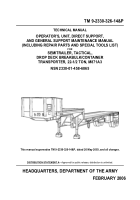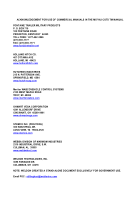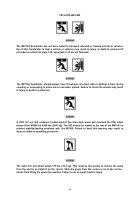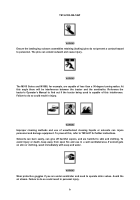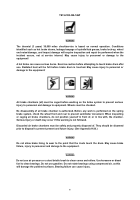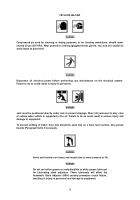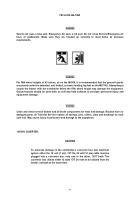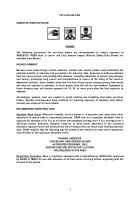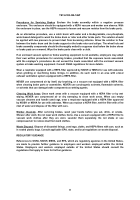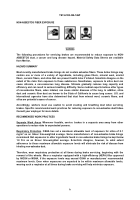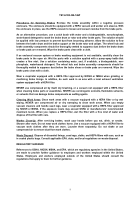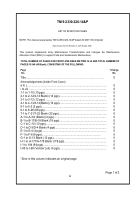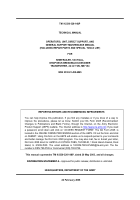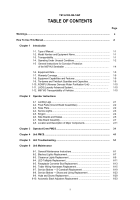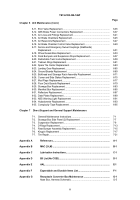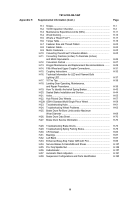TM-9-2330-326-14-P - Page 9 of 540
TM 9-2330-326-14&P
g
Procedures for Servicing Brakes. Enclose the brake assembly within a negative pressure
enclosure. The enclosure should be equipped with a HEPA vacuum and worker arm sleeves. With
the enclosure in place, use the HEPA vacuum to loosen and vacuum residue from the brake parts.
As an alternative procedure, use a catch basin with water and a biodegradable, non-phosphate,
water-based detergent to wash the brake drum or rotor and other brake parts. The solution should
be applied with low pressure to prevent dust from becoming airborne. Allow the solution to flow
between the brake drum and the brake support or the brake rotor and caliper. The wheel hub and
brake assembly components should be thoroughly wetted to suppress dust before the brake shoes
or brake pads are removed. Wipe the brake parts clean with a cloth.
If an enclosed vacuum system or brake washing equipment is not available, employers may adopt
their own written procedures for servicing brakes, provided that the exposure levels associated
with the employer’s procedures do not exceed the levels associated with the enclosed vacuum
system or brake washing equipment. Consult OSHA regulations for more details.
Wear a respirator equipped with a HEPA filter approved by NIOSH or MSHA for use with asbestos
when grinding or machining brake linings. In addition, do such work in an area with a local
exhaust ventilation system equipped with a HEPA filter.
NEVER use compressed air by itself, dry brushing, or a vacuum not equipped with a HEPA filter
when cleaning brake parts or assemblies. NEVER use carcinogenic solvents, flammable solvents,
or solvents that can damage brake components as wetting agents.
Cleaning Work Areas. Clean work areas with a vacuum equipped with a HEPA filter or by wet
wiping. NEVER use compressed air or dry sweeping to clean work areas. When you empty
vacuum cleaners and handle used rags, wear a respirator equipped with a HEPA filter approved
by NIOSH or MSHA for use with asbestos. When you replace a HEPA filter, wet the filter with a fine
mist of water and dispose of the filter with care.
Worker Clean-Up. After servicing brakes, wash your hands before you eat, drink, or smoke.
Shower after work. Do not wear work clothes home. Use a vacuum equipped with a HEPA filter to
vacuum work clothes after they are worn. Launder them separately. Do not shake or use
compressed air to remove dust from work clothes.
Waste Disposal. Dispose of discarded linings, used rags, cloths, and HEPA filters with care, such as
in sealed plastic bags. Consult applicable EPA, state, and local regulations on waste disposal.
REGULATORY GUIDANCE
References to OSHA, NIOSH, MSHA, and EPA, which are regulatory agencies in the United States,
are made to provide further guidance to employers and workers employed within the United
States. Employers and workers employed outside of the United States should consult the
regulations that apply to them for further guidance.
Back to Top

